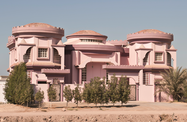Despite difficult conditions in the real estate market following the global economic downturn during 2009 and 2010, Ras Al Khaimah (RAK) has held up relatively well, and a number of developments are being pushed ahead.
The real estate and business sector contributed an estimated 7.2% of RAK’s total GDP in 2010, according to the latest data from the RAK Department of Economic Development (DED). A handful of major players continue to dominate the sector: Al Hamra Real Estate Development Company (AHREDC), Rakeen Development and RAK Properties, which are all partly owned by the government and less than a decade old. Each of these developers is on track to oversee the completion of major projects in 2012-13.
The Mina Al Arab villas project, for example, started in 2005 by RAK Properties, is now in its final stages. By mid-2011, the firm had handed over a total of 307 villas, and in October RAK Properties began selling apartments in six of the development’s 20 apartment buildings. The occupancy level for the project as a whole stood at 84% by February 2012, according to AHREDC.
RAK Properties – the emirate’s biggest property developer – has also seen large-scale developments edge closer to completion, including Mina Al Arab, a $3.27bn beachfront resort that features several islands, as well as the recently-finished RAK Tower and Julfar Towers.
Although the company posted net profits of $29.5m for 2011, down from $51m the previous year, this is the result of the higher provisions for impairments on properties. However, these new revenue streams, in addition to the handover of 3000 apartments, villas and offices by the year-end 2012, means that RAK Properties should return to growth in the short-to-medium term.
Work on Al Marjan Island – a cluster of five man-made islands near the Al Hamra area outside RAK City – is progressing well, and in January 2012 it was reported that the flagship $1.8bn project, developed by the Dubai-based Select Group, is set for completion in 2013. The islands will offer a broad mix of developments, from commercial to residential, including apartments for rent.
With RAK set to benefit from swelling numbers of tourists, largely due to increased government promotion of the sector, such developments will cater to the uptick in demand. The RAK Tourist Investment and Development Authority expects around 1.2m tourists to visit the emirate by the end of 2012, up from 800,000 in 2011.
Several other key tourism infrastructure projects will come on-line in 2012, including Bab Al Bahr, scheduled to open its doors in the first quarter of 2013 on Al Marjan Island. This development will boast 640 hotel rooms, as well as apartments, office and retail space.
However, infrastructural challenges have been cited as a reason for what some see as smaller-than-expected returns. According to a recent report by real estate research firm Asteco, the provisioning of electricity, water and disposal services continued to slow the completion of projects.
While RAK is not unique in this regard within the UAE, connectivity problems throughout the market are likely to be resolved at a slow pace due to the high number of buildings marked for completion and handover. Despite this, it is clear that RAK’s property sector is back on track, as new projects get under way and others reach completion.

